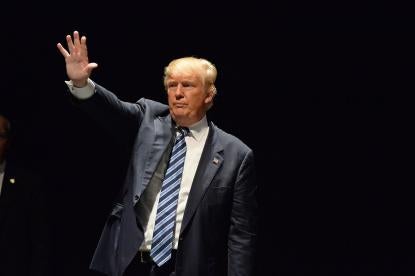On January 23, 2017, in his first full weekday in office, President Donald Trump fulfilled a campaign promise by signing a presidential memorandum taking executive action formally withdrawing the United States from the 12-nation Trans-Pacific Partnership (TPP) trade agreement. TPP included Canada, Mexico, Japan, Australia, New Zealand, Chile, Peru, Malaysia, Singapore, Vietnam, and Brunei, in addition to the United States. Combined, those countries represent 40 percent of the global economy.
Proponents of TPP in the business community claimed the trade agreement would have reduced trade barriers, opened new markets, and slashed tariffs for American exports and imports, while protecting labor, the environment, and intellectual property. The agreement did not, however, directly address currency manipulation. Opponents in organized labor claimed TPP would have cost the United States millions of jobs and that it did not contain adequate protection for workers and the environment. AFL-CIO President Richard Trumka and International Brotherhood of Teamsters President James Hoffa both praised President Trump's decision to withdraw the United States from TPP, as did the construction union leaders who met with him in the White House.
President Trump's executive action drew mixed reactions on Capitol Hill, where TPP was pending Congressional action. Senator Bernie Sanders (I-VT), for example, stated that he was "glad the Trans-Pacific Partnership is dead and gone" and that "now is the time to develop a new trade policy that helps working families, not just multinational corporations." Senator John McCain (R-AZ), on the other hand, termed the President's actions "a serious mistake" and commented, "This decision will forfeit the opportunity to promote American exports, reduce trade barriers, open new markets, and protect American invention and innovation."
TPP had been an important part of former President Barack Obama's legacy. It followed multi-lateral trade agreements (namely, the North American Free Trade Agreement or NAFTA) negotiated by his predecessors George H.W. Bush and Bill Clinton.
The absence of the United States from TPP raises concerns that China will fill the void and seek to control trade in the Asia-Pacific economic region. Beyond concerns for global trade policy, however, what might the effect of the decision to withdraw be on labor and employment law?
Potential Implications for Labor and Employment Policy
When President Obama announced TPP, he noted that it contained the strongest labor protections of any multilateral trade agreement ever negotiated. TPP's preface to "Chapter 19 – Labour" distinguished it from previous labor protections in NAFTA under the North American Agreement on Labor Cooperation (NAALC) which it termed as "weak." TPP's labor protections were described as a "sea change" from NAFTA's labor-side agreements and earlier trade agreements; the Obama administration asserted that TPP established "a new global norm for labor rights" backed up by enforceable dispute settlement procedures and trade sanctions.
The 12 nations signatory to TPP committed to establish and observe international labor standards set forth as the "fundamental human rights conventions" in the United Nations’ International Labour Organization (ILO), which the United States has never ratified. Ratification of those conventions would have the force and effect of a treaty obligation overriding domestic labor and employment laws. The five "core" ILO standards incorporated in TPP are:
-
freedom of association—the right to form and join unions without interference;
-
freedom of association and collective bargaining—the right to negotiate collective bargaining agreements without interference;
-
elimination of forced labor;
-
abolition of child labor; and
-
freedom from discrimination in employment.
Each of these ILO conventions—especially C.87’s "Freedom of Association and Protection of the Right to Organise" and C.98’s “Right to Organise and to Bargain Collectively"—has decades of ILO interpretations which run counter to the Taft–Hartley Act and precedent established by the Supreme Court of the United States protecting employer communications and prohibiting recognitional picketing, secondary boycotts, and the permanent replacement of economic strikers.
TPP also contained requirements that signatory countries adopt and maintain "acceptable conditions of work" including minimum wages, hours of work, overtime protections, and occupational safety and health.
In addition, the TPP established, in its words, "historic commitments" from the governments of three signatory countries—Brunei, Malaysia and Vietnam—to institute legal reforms enacting enumerated laws on the right to form or join unions, and on minimum wages, for example.
Obviously, however, TPP's labor standards were insufficient to convince organized labor to support the trade agreement. Going forward, the rejection of the labor standards in TPP may pave the way for future administrations to negotiate even tougher standards in future trade agreements, potentially including the enforceability of the unratified ILO standards against the United States, which has been a long-term goal of American labor unions.
As Congress has never seen fit to ratify ILO C.87 and C.98, it would be ironic if Congress were to, in effect, ratify those labor standards through a future trade agreement.




 i
i

